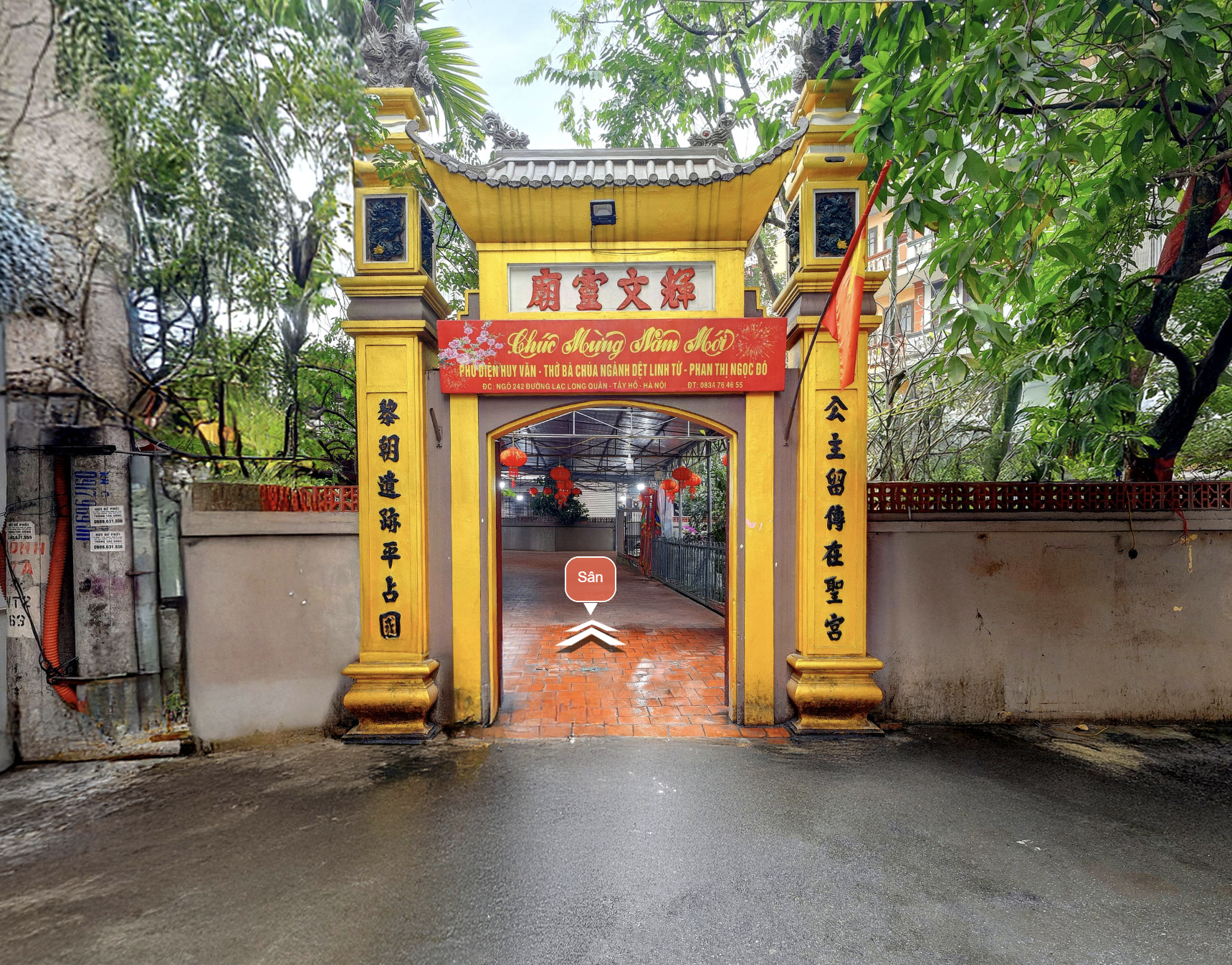
Lane 242, Lac Long Quan Street, Buoi Ward, Tay Ho District, Hanoi.

Introduce
Huy Van Shrine is the place of worship dedicated to Princess Phan Thi Ngoc Do. However, local people have long been more familiar with the name "Temple of the Lady of Lĩnh Weaving," as she was credited with teaching and developing the art of Lĩnh silk weaving in Ke Buoi. According to legend, the shrine was built on the site of the former palace that the king had constructed for her during her lifetime.
According to legend, Madam Phan Thi Ngoc Do was of Champa origin and a concubine of King Le Thanh Tong. She was deeply loved and favored by the king not only for her beauty and virtuous character but also for her exceptional craftsmanship in embroidery and, most notably, her remarkable skill in weaving lĩnh fabric.
However, due to the strict Confucian views at the time, it was deemed unacceptable for a foreign woman to become a favored concubine of the emperor. As a result, many high-ranking officials submitted petitions, strongly urging the king to abandon her. Under the persistent pressure from both civil and military officials, Le Thanh Tong also realized that keeping a Champa woman in the imperial palace might be inappropriate. Therefore, he decided to arrange separate lodgings for her.
Seeing the picturesque scenery along the shores of West Lake, the emperor chose a location for the Champa beauty to reside. He allocated a portion of Trich Sai Village (now part of Buoi Ward, Tay Ho District, Hanoi) and established an estate named Thien Nien Trang. There, he had a palace built for Consort Ngoc Do, along with 24 Champa maidens and their attendants, to live on a vast area of over eighty mẫu (a traditional Vietnamese unit of land). This estate provided them with resources for farming and cultivation. Furthermore, considering their need for a place to express their spiritual aspirations, Emperor Le Thanh Tong ordered the construction of a new pagoda on the ruins of the Bat Thap Pagoda, which had long since collapsed. This new temple was named Thien Nien Pagoda, serving as a place where Consort Ngoc Do and her attendants could worship Buddha and pray.
While living at Thien Nien Trang, Consort Ngoc Do, along with her maidens, utilized their skills to weave lĩnh fabric using traditional Champa techniques. This resulted in the production of a unique textile. Later, seeing the hardships of the Trich Sai villagers, who relied solely on firewood gathering and fishing yet still lived in poverty, she decided to pass on the craft to them. She generously funded the construction of weaving looms and distributed them to the villagers. Furthermore, she extended her teachings to the people of Vong Thi and Bai An villages, encouraging them to grow mulberries and raise silkworms, thus promoting the local textile industry.
From then on, lĩnh fabric, especially lĩnh hoa produced by villages in the Buoi region, became famous far and wide. It was not only sought after by the people of Thang Long Citadel but also sold across many regions of the country and highly valued by foreign merchants. This popularity led to the well-known folk saying:
"The La silk, Buoi lĩnh, Phung brooms,
Van Phuc brocade, Mo satin blooms."
Legend has it that Consort Phan Thi Ngoc Do gave birth once, but unfortunately, both she and her child passed away. Grateful for her contributions, the villagers pooled their efforts and resources to build a shrine in her honor, which became known as the Temple of the Lady of Lĩnh Weaving.
Every year, on the 5th day of the first lunar month, the villagers hold a grand ceremony to commemorate Consort Ngoc Do’s legacy and express their gratitude for her contributions.
Artifacts
Nearby Places
No.6, Lane 319, An Duong Vuong Street, Phu Thuong ward
No. 20, Lane 472, Cluster 3, Lac Long Quan Road, Nhat Tan Ward, Tay Ho District, Hanoi.
No. 07, Lane 30, Tay Ho Road, Quang An Ward, Tay Ho District, Hanoi.
Residential Area No. 5 (No. 3, Lane 200, Au Co Road), Tu Lien Ward, Tay Ho District, Hanoi.
Residential Area No. 5 (No. 3, Lane 200, Au Co Road), Tu Lien Ward, Tay Ho District.